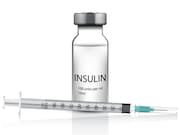Tag: Health Costs
Continuity of Care Tied to Lower Expenditures, Hospitalization
Expenditures lower for those cared for by docs in highest quintile of Bice-Boxerman continuity score
2017 Saw Slowing in National Health Care Spending
Slower growth in health care spending mainly due to use and intensity of goods and services
Cost-Related Insulin Underuse May Affect One in Four Patients
Patients reporting cost-related underuse more likely to have poor glycemic control
Name-Brand Medications Driving Spike in U.S. Drug Spending
Greatest costs for Humira, Remicade, Enbrel, Novolog, and Neulasta
Notes Reflecting Financial Considerations ID’d in ICU
Overall, 4.2 percent of admissions have at least one clinical note reflecting financial considerations
Cardiac Implant Prices Higher in U.S. Than EU Countries
However, there is significant price variation both within and between EU nations
Health Enterprise Zone Initiative Cut Hospitalizations, Costs
Initiative involves state-funded programs to improve access, healthy behaviors in underserved areas
Almost One in 10 Treated in Hospital for Non-Fatal Injury
Costs of hospital-treated non-fatal injuries estimated at $1.853 trillion; $168 billion in medical spending
Inadequate Reimbursement May Mar Diabetes Prevention Program
Large gap between costs, projected reimbursement for Medicare Diabetes Prevention Program
Spending Often Persists in High-Cost Medicare-Medicaid Eligible
Most of cost is related to long-term care, little tied to potentially preventable hospitalizations














